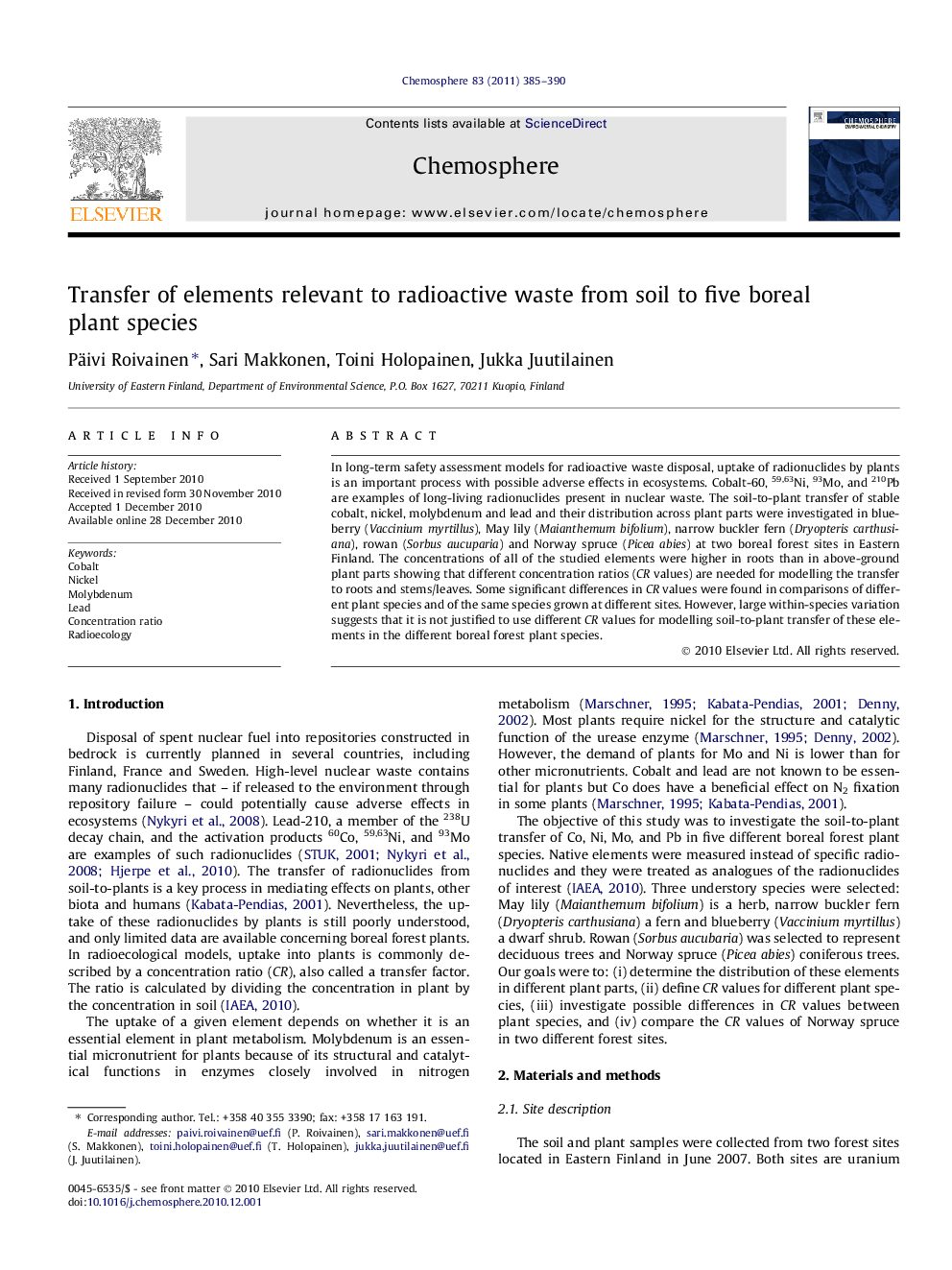| Article ID | Journal | Published Year | Pages | File Type |
|---|---|---|---|---|
| 4410878 | Chemosphere | 2011 | 6 Pages |
In long-term safety assessment models for radioactive waste disposal, uptake of radionuclides by plants is an important process with possible adverse effects in ecosystems. Cobalt-60, 59,63Ni, 93Mo, and 210Pb are examples of long-living radionuclides present in nuclear waste. The soil-to-plant transfer of stable cobalt, nickel, molybdenum and lead and their distribution across plant parts were investigated in blueberry (Vaccinium myrtillus), May lily (Maianthemum bifolium), narrow buckler fern (Dryopteris carthusiana), rowan (Sorbus aucuparia) and Norway spruce (Picea abies) at two boreal forest sites in Eastern Finland. The concentrations of all of the studied elements were higher in roots than in above-ground plant parts showing that different concentration ratios (CR values) are needed for modelling the transfer to roots and stems/leaves. Some significant differences in CR values were found in comparisons of different plant species and of the same species grown at different sites. However, large within-species variation suggests that it is not justified to use different CR values for modelling soil-to-plant transfer of these elements in the different boreal forest plant species.
Research highlights► Soil-to-plant transfer of Co, Mo, Ni and Pb investigated in boreal forest. ► Concentrations in roots higher than in above-ground plant parts. ► Large within-species variation found. ► Pooled concentration ratios recommended for modelling.
